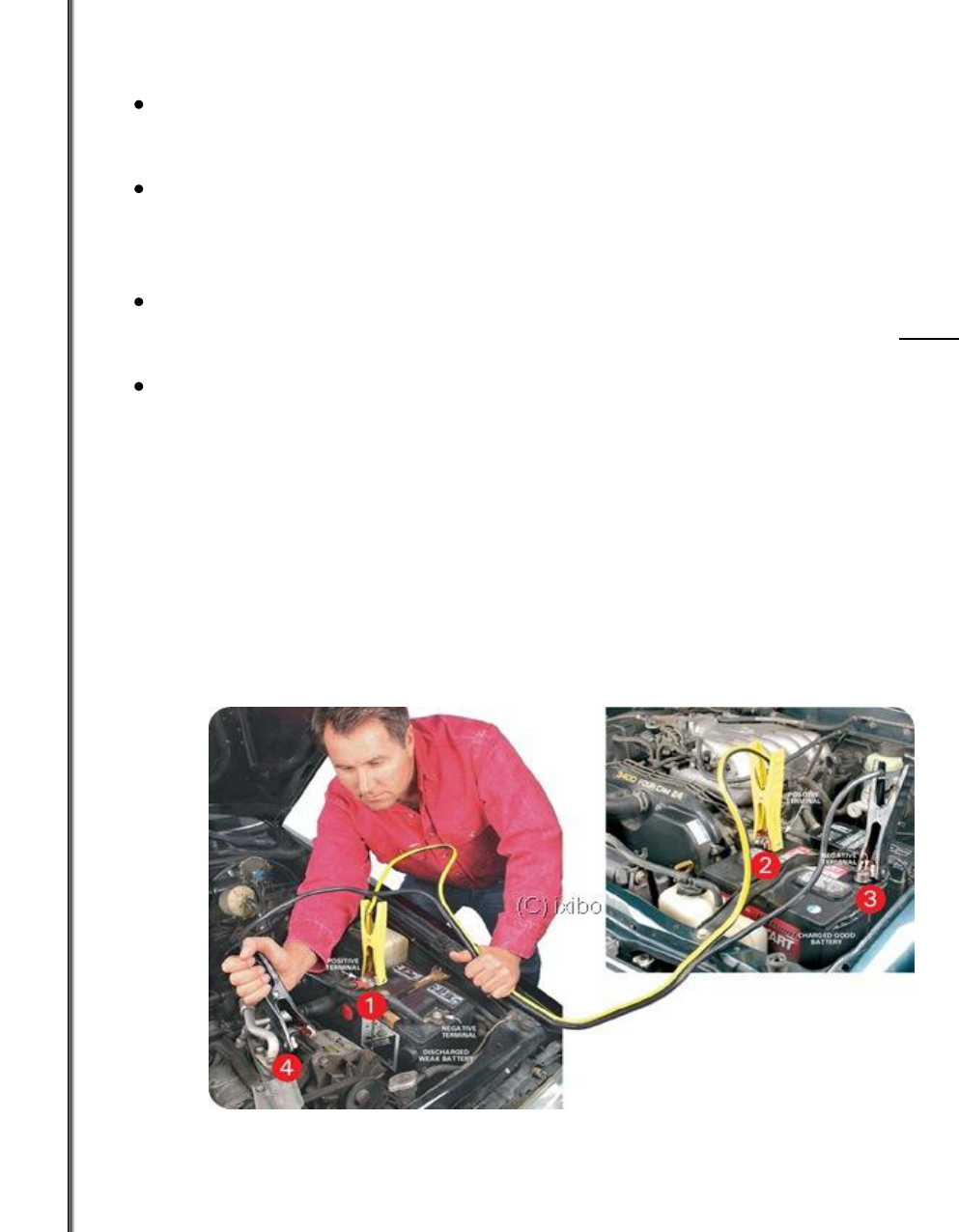
Information You Can Use to Prevent Accidents & Injuries
The Hazards of Battery Charging
Explosive hydrogen, acidic liquids and vapors, electrical burns, muscle strains
and sprains. All of these hazards arise when servicing, charging, or jumping
the common lead-acid battery found in cars and trucks. They can be
minimized by following a few common sense safety rules.
EYE PROTECTION First, always wear safety goggles or a face shield when
working around a battery. Batteries contain corrosive acids that are capable
of eating away metals. It takes just one droplet to cause serious eye
damage. Just popping open the vent cap may throw out a droplet.
A short or faulty regulator can cause the electrolyte to boil, releasing acid
vapors. A fault within the battery could cause it to explode, throwing
fragments of the case and acid.
FIRE PROTECTION Lead-acid batteries produce flammable hydrogen gas
while being charged. This highly explosive gas, generated within the cells,
will expand and seep out of the vent caps. A cigarette, tool, or spark from
any source could ignite the gas, causing the battery to explode.
Always charge in a well ventilated area. Remember too that the battery is
receiving a charge and releasing hydrogen when the car is running, not just
when hooked up to a battery charger.
JUMP STARTING Dead batteries in cars and trucks are not uncommon-
particularly in winter. The first thought is to get a jump start. When jumping
a battery, remember the following safeguards:
Be sure all electrical equipment is off. If you connect the jumper
battery while a load is being drawn, a spark could occur.
Check the battery fluid level. If the plates are exposed, add water until
they are covered. Never add acid.
Make sure both batteries are of the same voltage.
Make sure vent caps are in place to prevent electrolyte splash.
Use good quality jumper cables-at least 10-gauge wire.
Always be sure of your polarity when arranging the jumper cables.
<Continued On Page 2>

Page 2
MAKING THE RIGHT CONNECTIONS
Connect the first cable to the positive (+) terminal of the good battery;
then attach the other end of that cable to the positive (+) terminal of
the dead battery.
Next, attach the second cable to the negative (-) terminal of the good
battery, and make the fourth and last connection to a clean metal part,
such as the engine block of the car being energized, rather than to its
negative battery terminal.
This completes the electrical circuit, as if it were connected to the dead
battery, but if sparks are produced, it serves to keep them away from
any explosive battery gases.
Never lay your tools on top of the battery. They could come in contact
with both posts, or the positive post and a ground, creating a short.
PROTECT YOUR BACK Batteries are heavy. If you must move one, use a
battery strap as a handle, keep your back straight. Don't bend at the waist.
Tighten your stomach muscles as you lift. Don't twist your spine as you lift or
move.
Remember that these rules apply both on and off the job. The
batteries in your own vehicle or on your boat are just as potentially
dangerous. Respect the hazards and take no chances or short cuts!
Users of this tailgate talk are advised to determine the suitability of the information as it applies to local situations and
work practices and its conformance with applicable laws and regulations.
